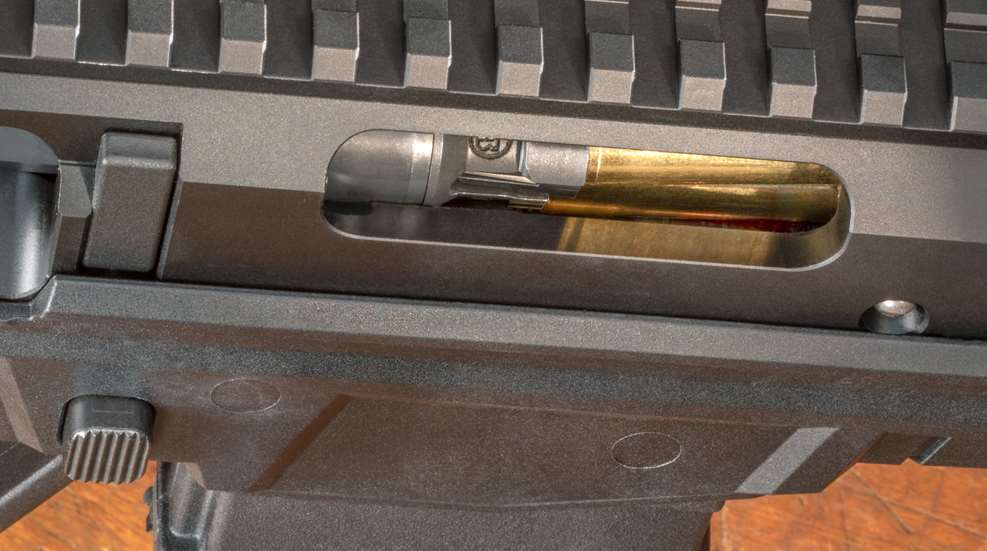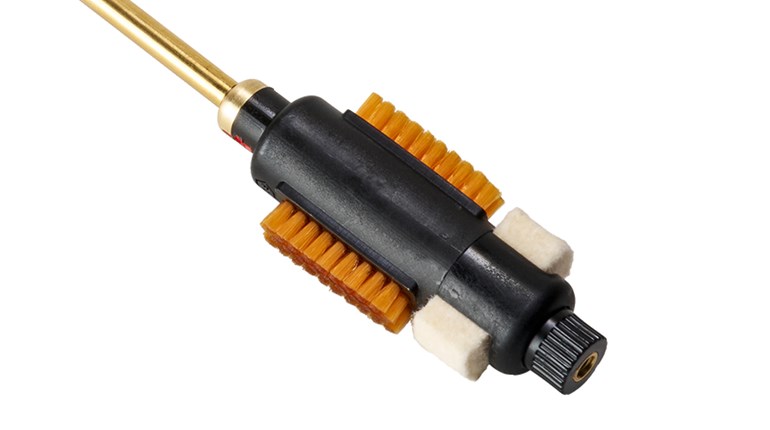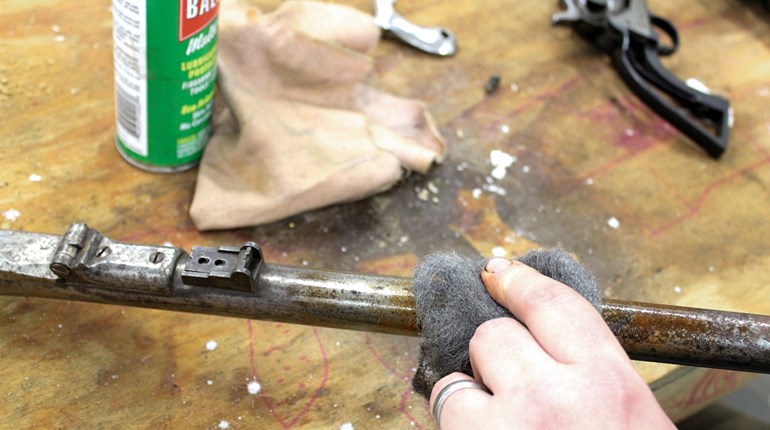
Have you ever noticed that when you initially settle in to shoot a group, oftentimes your first shot is somewhat “out” from the successive shots? I have, and it seems that I’m not alone, as questions about why this happens reappear from time to time. Several factors can cause deviations between the first and successive shots fired out of anything accurate enough with which to group. While there are various one-size-fits-all explanations to this phenomenon, I think that relying on any one of them is an oversimplification that may miss other contributing factors. What follows are a smattering of explanations that come from experience, research and plain ol’ rifle-shooting lore.
For example, the deviation in the first, or “cold-bore,” shot with which precision-rifle shooters have to contend is generally attributed to a clean bore that hasn’t been heated. The degree of shift from that first shot to the rest varies by barrel and load. Most precision shooters lean toward the clean aspect as the bigger culprit in this shift. During the sniper part of my life, the SOP for guys with significant cold-bore shifts (greater than 3/4 MOA) was to clean rifles on the range and then fire a few fouling shots before packing up from a training day, reducing their first-shot shifts to manageable deviations. Most of us simply knew and adjusted for the minor shifts of our own cold-bore shots. However, it was not uncommon for the direction—but not distance—of shift to change slightly from time to time, regardless of bore temperature or cleanliness. This suggests that neither the cold-nor-clean aspects of our rifle bores were solely responsible for any first-shot deviations experienced.
Direct-impingement or traditional piston-operated semi-automatics can see measurable shifts from the first shot to successive shots due to non-pressurized, cold gas systems that change rapidly after firing commences. Oftentimes unnoticed on an unsuppressed rifle, the deviation between early and later shots can be significant when a sound suppressor is mounted. The degree to which this results from a highly pressurized system changing the position of a barrel’s critical node (through vibrational differences) or due to rapid heating of the barrel and suppressor metals is open for investigation and debate. Because I typically see smaller degrees of first-shot deviation in my suppressed bolt-action groups, I suspect that the downstream effects of higher-operating pressures in sound-suppressed, semi-auto rifles are a bigger factor than heat here.
Another element that oftentimes affects where the first shot in a string goes has to do with loading technique. In cartridge cases that aren’t completely filled with powder, the force with which a cartridge is chambered affects powder-burn rates. For example, when shooting semi-autos, we usually hand-cycle the first round by retracting and releasing a charging handle. Subsequent rounds are chambered by the rifle’s operating mechanism. Hand-cycling cannot match the velocity that a bolt attains during the cycle of operation. Therefore, the energy with which a round is chambered varies based on the force used to move the rifle’s bolt. As a result, the powder ends up arrayed differently between a hand-cycled first round and automatically loaded follow-up shots. The more open space in a case, the worse the problem. Locking a bolt to the rear and then pressing the release to slam the first round into the chamber doesn’t fully solve the problem: The velocity and resultant energy are still not the same as that derived through semi-auto function.
A further complication is that as successive rounds are stripped from a magazine, spring tension on the follower and friction between cartridge and feed lips are reduced. That allows the operating system to use less energy to strip and feed each round in turn, chambering them with increasingly higher bolt velocities. This varying-powder-position problem can be especially noticeable in pistol-caliber carbines and subsonic or light rifle loads. The differences in powder position can cause large deviations on target. My own sniper element had no small amount of grief while trying to maintain shot-to-shot consistency with hand-cycled, subsonic loads for this reason. That was nearly 20 years ago. I sure hope our warfighters have better options now. Two reference books that address this issue are “Understanding Firearm Ballistics” by Robert A. Rinker (2002) and “Hatcher’s Notebook” by Julian S. Hatcher (1962). Both authors draw from their own experiences and independent testing to explain changes in velocity and pressure due to powder-position variations in cartridges.
We tend to focus on the downstream effects of varying metals’ coefficients of expansion (due to heat), but temperature changes to powder granules also factor in. The more heat that is present, the higher the pressure, all else being equal. A simple explanation from Rinker shows that gas molecules move faster and impact each other and the inside of the case walls more frequently as heat increases, in turn causing pressure to increase. Therefore, as a chamber and bolt face heat up, so do chambered cartridges. Depending on the type of ammunition and firearm, this can show up downrange as shot-to-shot deviations. Letting a barrel and operating parts cool between shots and before chambering the next round, however impractical, is about the only way to eliminate this factor.
Finally, we can’t ignore the part that the shooter plays as he or she settles in behind a rifle. Most people impart some degree of change to their position after the first shot in a group. The degree of point-of-impact shift can range from tiny fractions of an MOA for precision-rifle professionals to one or more MOA for someone who struggles to get stable before taking a shot. This is why we instructors spend so much time fussing about proper body position, sight alignment, breathing and trigger manipulation from the very first shot. Finding one’s natural point-of-aim, using minimal movements to cycle a manual action and follow-through after each shot are critical components of those fundamentals. Unless you have the discipline and consistency of a high-power-rifle competitor, coming “off the gun” between shots only exacerbates the grouping problem.
This all assumes external factors like different pressures on a non-freefloat barrel, poor-quality ammunition or atmospheric influences are factored out. I’m as sure that there are other contributors to the first-shot-deviation issue as I am that someone is now reaching for their keyboard to say they have never heard of, let alone experienced, this problem. If you’re blessed to be in the latter group, don’t waste time writing, just get out there and start competing.






































